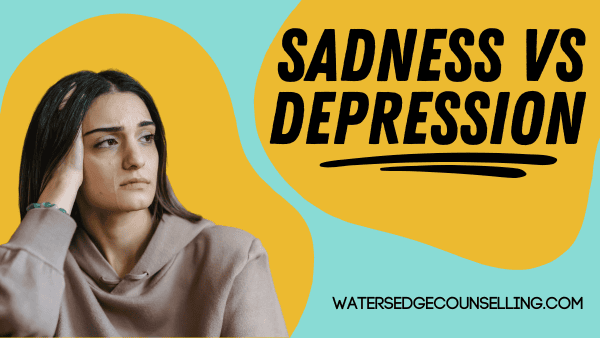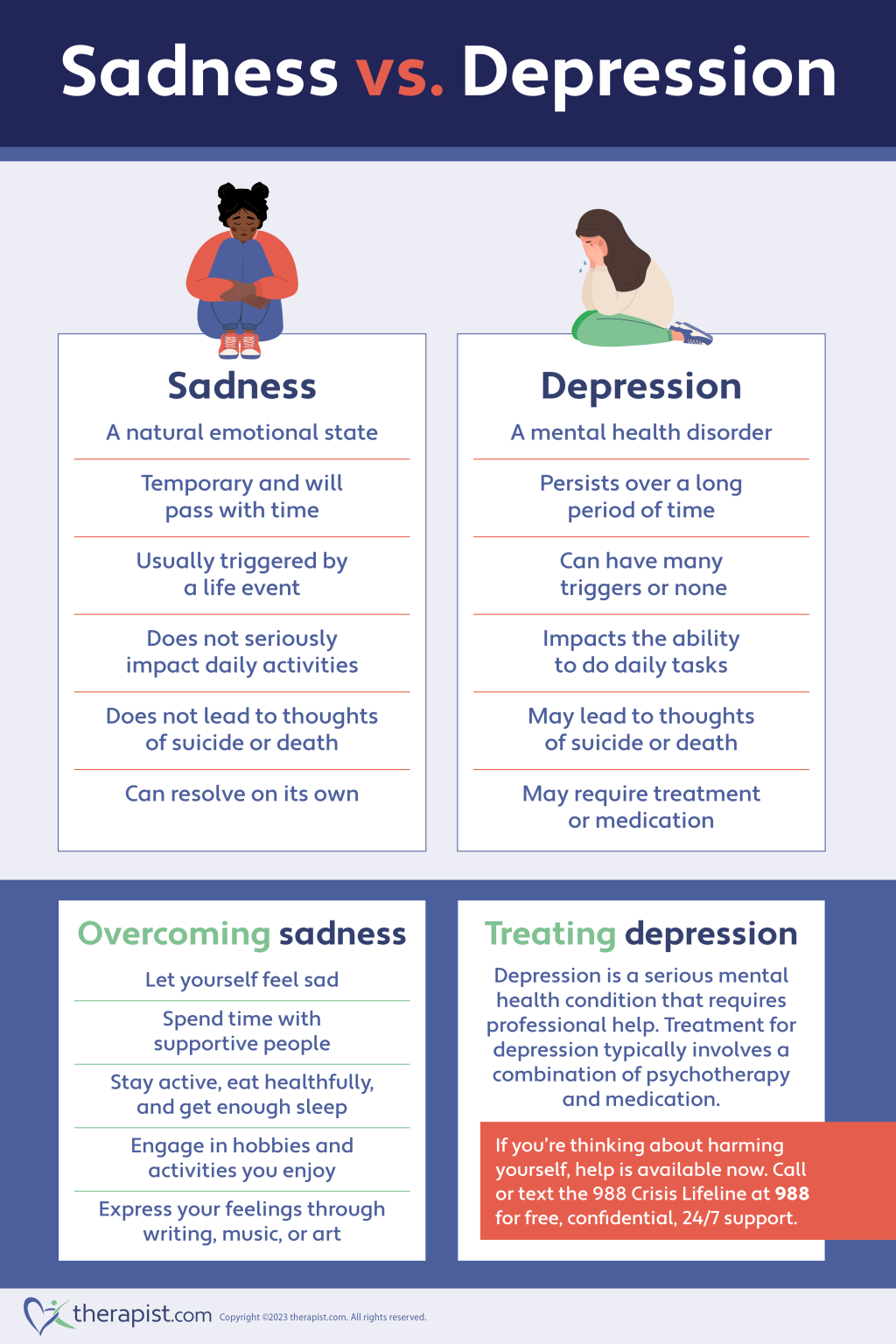
It is normal to feel a little down now and then, so what makes sadness different from depression?
After two decades of living with on again-off again depression, learning to see the flags when my mental health is going downhill is crucial. Early on in my diagnosis, after I had gotten out of rock bottom and was functioning again, I mistakenly thought that sadness was the path to depression. It meant I panicked whenever I felt down and left me confused when I felt mediocre.
It was a relief when I learned that sadness is a natural, and healthy part of life. But that didn’t change the fact I needed to better understand what depression was. If it wasn’t just feeling sad, what was it?
Sadness
Sadness comes from a sense of loss, pain, grief and disappointment. It can be momentary or linger, but it doesn’t consume us for long periods. We feel it, process it, and move through it.
Like a child whose balloon bursts, and they burst out crying at the sudden and unexpected loss. After a while, they will calm and maybe even forget about the balloon. We can be sad about things that are more important than a simple balloon, but the premise is there.
We can move through sadness by engaging with hobbies and people we love, and are generally able to function through it.
Depression
Depression on the other hand, is a deeper, and longer sense of sadness, darkness and lethargy. We withdraw from people, may be irritable, don’t enjoy the activities we used to, feel overwhelmed or numb. It can be brought on by your brain chemistry-, short- or long-term trauma, grief, anger, confusion and illness. Sometimes we don't even know what causes it, it simply is there.
Beyond Blue tells us that if you have felt sad or moody or low for two weeks or more, you may be experiencing depression. And at the moment, 1 in 7 Australians are journeying through it.
In some cases, it may start as a natural sadness, but if you are unable to process that pain, or aren’t safe to do so, then the sense of heaviness increases until you feel it in your heart, mind, body and bones. If it keeps going, it can turn into a sense of hopelessness and leave you incapable of functioning. In some cases it may leads to thoughts of suicide.
This isn’t a failure on the person’s part – this is part of the mental health condition. And much like having a broken arm, it needs to be treated, nurtured and rested to fully function again.
Healing and treatment
Depression impacts every area of your life and changes your behaviour in order to survive. You can heal from depression with support and treatment – speaking to your doctor and seeing a counsellor is a great first step.
In my experience, a key factor in managing depression is the ability to identify my sadness, the depression, and when I may be sliding into depression after feeling a bit sad. When I do this, I take the steps to care for myself and honour my feelings, giving me the chance to process my pain rather than let it consume me.
There will still be seasons when I experience depression. The time of year, level of stress I am under, physical illness and other factors all play a role in my health. But instead of shaming myself for feeling this way, I can identify what is going on and practice self care instead.
After all, neither sadness or depression is wrong. One is a feeling/experience, the other is a condition. Both are part of being fully human, but knowing the difference empowers me to ask for help when I need it.
Take a look at this infographic on Sadness Vs Depression from Therapist.com. What have you learned about the difference between sadness and depression?

Leave a Reply